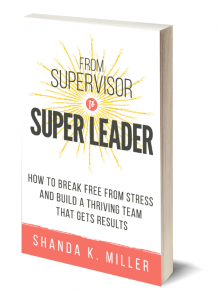
How to create your personal strategic plan
A personal strategic plan is a clear plan for achieving your goals. The exercise of creating your own personal strategic plan can help you identify what’s most important to you and can define what success means to you.
This article is part of my article series 5 Key Principles for Intentional Living and provides a step by step process for creating your own personal strategic plan. It also discusses the benefits of creating a personal strategic plan. This includes getting really clear about what’s most important to you. Also included is a personal strategic plan example.
What is a strategic plan?
Strategic plans are common with businesses, nonprofits, and government organizations. They act as a compass for the organization and are typically a one-page document. A strategic plan is a clear road map for where the organization wants to be, and includes its core focus areas and actions.
What are the benefits of creating a personal strategic plan?
Like organizations, a personal strategic plan can be your compass. It can help you be intentional and proactive in reaching your goals. Not only that, creating your own plan will help you identify the goals that are most in line with what you truly want to become and what you want your life to become. Further, a personal strategic plan can be a planning tool for you to achieve your version of an extraordinary life. It can also help you achieve your own definition of success.
The process of creating your own plan can help you define what success means to you. Success means different things for different people. I believe that success is defined as achieving the goals that are in line with our core values and what’s most important to us.
A strategic plan can help you identify focused objectives and goals for you to work toward, and help you reach your version of success. A personal strategic plan moves you forward. As a key planning tool, a strategic plan becomes your action plan for a set period of time. Thus, I suggest creating a one or two-year personal strategic plan, and revisiting and revising it once a year.
Personal strategic plan example
I developed a strategic plan for the last organization I worked for. It was a very small program, and I learned a lot from the process. Thus, I decided to create my own personal strategic plan. This personal strategic plan will guide me for the next year. It will help me to stay focused on what I decided my largest priorities are and what I want to accomplish. A link to my personal strategic plan example is provided below. Please take a look and use it as a guide for creating your own personal strategic plan.
Personal strategic plan elements
A personal strategic plan has the following elements:
- Personal purpose statement
- Personal vision statement
- Top 5 personal core values
- Strategic focus areas
- Objectives and SMART goals for each focus area
Steps to creating your personal strategic plan
You’ll want to set aside a good chunk of personal time in a location free of distractions. You may need to schedule a few different blocks of time for the different steps. It probably took me a total of 4 hours and four different blocks of time. You’ll want to have a notebook, notepad, or your journal, and your favorite writing utensil handy.
Step 1: Download your free personal strategic plan template
I have created a personal strategic plan template just for you. You can use it to easily fill in the elements as you go. This free template is in the same format as my example personal strategic plan. To get the free template, fill in your email in the form below and it will be sent directly to your inbox.
Step 2: Identify your top 5 personal core values
The starting point for developing your personal strategic plan is to assess and define your personal core values. Defining your core values will ensure the strategic plan you create is the right plan for achieving what’s most important to you. Personal values are what we care about most in life and are signified by words that resonate deep in our hearts.
For step by step guidance on defining your top 5 persona core values, see my article: Personal core values assessment: Success and fulfillment begins with determining what you value in life
Step 3: Identify your 3 strategic areas of focus
Your 3 strategic areas of focus should be the most important areas of your life that you want to focus on and prioritize this coming year.
First, you’ll want to identify the most important areas of your life. You can keep your top 5 personal core values in mind as you begin. On a blank sheet of paper list at least 5, but no more than 7 most important areas of your life. You can use the list below as guidance, but there may be areas you come up with that are not on the list. If you come up with more than 7, try combining two areas into one. For example, I combined Family and Community into one area.
Areas of Life
| Work Business Personal Finances Family Health (Diet & Fitness) | Play/Recreation/Sport Adventure Travel Friendship Romance | Social life Creativity/Art Community Spirituality/Religion Public Service |
Next, you’ll determine how balanced your most important areas of life are. Draw a circle and slice it like a pie with the total number of slices representing each of your important areas of life. Next, write your most important areas of life in each of the slices. You should not have more than 7 slices.
For each slice of the pie, guesstimate how much of your time (using percentages) you currently spend on each of the important areas of your life. Then add the percentages to the slices. The slices should add up to 100%.
Next, reflect on each area of your life. Consider if there are one or more areas that have been more neglected or out of balance from other areas, or don’t receive as much of your time as you’d like. Put a star next to the important areas of life where you would like to put more focus and get more in balance with. Think about what is most important to you right now. What would you most like to focus on over the next year or two? For example, perhaps your career is going well, so in the next year you would like to put more focus on health and fitness.
Last, choose three of the areas of your life you would like to focus on over the next year or two. These will become your strategic areas of focus in your personal strategic plan. In Step 6 below, you’ll learn how to create specific objectives and SMART goals for each of these three areas of focus.
Here are my 3 strategic areas of focus over the next two years:
- Family & Community
- Passion Projects & Financial Freedom
- Health, Fitness, and Adventure
Step 4: Write your personal purpose statement
The definition of purpose is the reason for which something exists. A personal purpose statement describes your intention and the impact you want to make in the world. It also defines who you are. Having a purpose in life is what gets you out of bed in the morning.
Again, like your values, your purpose statement is aligned with what is important to you and aligned with your core values. A personal purpose statement is a clear and concise action statement of one or two sentences. In addition, a purpose statement is aligned with and creates a target for your goals in life.
As an example, my personal purpose statement is: To inspire and guide others to live their version of an extraordinary life.
Maybe you have already articulated your purpose in life, but if you haven’t, this is a key step toward living an intentional life. Your purpose is a large part of who you are. In many cases, one’s purpose statement is related to their career and making a difference through their life work. If you don’t already have an identified purpose, follow these steps to create your own personal purpose statement.
First, grab a blank sheet of paper and reflect on these questions:
- What am I passionate about?
- What most inspires me?
- What gets me out of bed in the morning?
- What do I want to be remembered for?
- How do I want to make a difference in the world?
- What do I do and why do I do it?
Next, draft your purpose statement. Write it in the present tense. Make it positive and action-oriented. Also, write it as concise as possible. Rewrite your statement as many times as you need to refine it until it feels just right.
For additional examples of personal purpose statements, check out this article: Examples of Life Purpose Statements
Step 5: Write your personal vision statement
A vision statement represents what you wish to become or wish your life to be like. It is aspirational. It also embodies what your future self and future life will look like.
This next step helps you get in touch with your vision for the future. It is an inspirational statement. Moreover, it is a sentence or paragraph that captures who you would like to be, do, and have, and it reflects your values and aspirations. Also, it defines what it will be like to be living your ideal life and will guide your way.
Here’s an example of the vision statement my husband and I came up with when we were still a few years away from realizing our current life of travel: The freedom to explore new places, passions, and opportunities while connecting with others and enriching our lives.
My own personal vision statement is: To live a long healthy and fulfilling life and to have the financial freedom to pursue my passions
To create your own personal vision statement:
- Take a few moments with a blank sheet of paper and jot down what comes to mind when you imagine what you aspire your future life to look like. Write down your intentions and review your values. Write down what you would like to do, to be, and to have in your life.
- Next summarize your ideas and create a vision statement that is as concise as possible. Then rewrite your statement as many times as you need to refine it until it feels just right.
Step 6: Determine your objectives and SMART goals
For your three focus areas, identify one or more objectives. An objective is a target or intention. For example, for my Health, Fitness, and Adventure strategic area of focus, one objective is to reach and maintain good physical fitness so I can enjoy an active lifestyle. Your objectives are attainable and they can also be something that you want to maintain or sustain.
For each objective, identify one or more SMART goals. SMART goals are specific, measurable, achievable, realistic, and time bound.
For my objective to reach and maintain good physical fitness so I can enjoy an active lifestyle, here are my specific SMART goals:
Goal 1: Get at least 70,000 steps or equivalent per week (average of 10,000 steps per day)
Goal 2: Do a full body strengthening workout at least 3 times per week
Both SMART goals are specific. They are measurable, which means I know whether I have achieved them each week or not. I have also determined that they are achievable and realistic given my abilities. These goals are also time bound, in that they include what I need to do each week.
I encourage you to read my article on SMART goals: Achieving your ideal life starts with planning and setting SMART goals. This article further explains what SMART goals are and how to create them. What’s more, it provides a SMART goal template and additional SMART goal examples.
Step 7: Put it all together on one page
Place all the elements of your personal strategic plan on one page. You can get creative and hand write your template or use my free personal strategic plan template. If you haven’t downloaded it yet, sign up to receive it below.
Next Steps
Once you have created your personal strategic plan, print it and place it in a prominent place. You could even frame it and hang it in your office. In addition, you could put a copy in your planner or store it on your smart phone.
Make a weekly date with yourself to review your personal strategic plan and create a weekly plan that will move you toward reaching the SMART goals outlined in your plan. For example, I like to schedule a date with myself for at least an hour every Friday afternoon to review my personal strategic plan. This is also a good time for me to reflect on my week and to set goals for the next week.
Make a plan to revisit your personal strategic plan each new year or on your birthday. Then review and revise it annually, even if it is a two-year plan.
It’s that time of year again for our Year in Review. The time to reflect on the past year and take inventory of our accomplishments. 2020 has been one of the most (if not the most) challenging of our lives. For some of you…READ MORE


